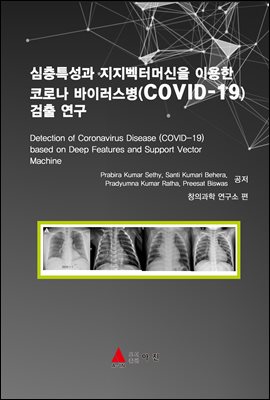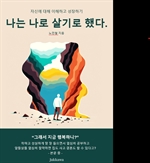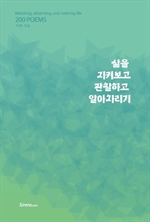
심층특성과 지지벡터머신을 이용한 코로나바이러스병(COVID-19) 검출 연구
- 저자Prabira Kumar Sethy, Santi Kumari Behera,Pradyumna Kumar Ratha, Preesat Biswas 저
- 출판사아진
- 출판일2020-07-12
- 등록일2020-12-21
- SNS공유


- 파일포맷PDF
- 파일크기6MB
- 공급사YES24
-
지원기기
PC
PHONE
TABLET
프로그램 수동설치
전자책 프로그램 수동설치 안내
아이폰, 아이패드, 안드로이드폰, 태블릿,
보유 1, 대출 0,
예약 0, 누적대출 5, 누적예약 0
책소개
The detection of coronavirus (COVID-19) is now a critical task for the medicalpractitioner. The coronavirus spread so quickly between people and approaches
100,000 people worldwide. In this consequence, it is very much essential to identify
the infected people so that prevention of spread can be taken. In this paper, the
deep feature plus support vector machine (SVM) based methodology is suggested
for detection of coronavirus infected patient using X-ray images. For classification,
SVM is used instead of deep learning based classifier, as the later one need a
large dataset for training and validation. The deep features from the fully
connected layer of CNN model are extracted and fed to SVM for classification
purpose. The SVM classifies the corona affected X-ray images from others. The
methodology consists of three categories of Xray images, i.e., COVID-19,
pneumonia and normal. The method is beneficial for the medical practitioner to
classify among the COVID-19 patient, pneumonia patient and healthy people. SVM
is evaluated for detection of COVID-19 using the deep features of different 13
number of CNN models. The SVM produced the best results using the deep feature
of ResNet50. The classification model, i.e. ResNet50 plus SVM achieved accuracy,
sensitivity, FPR and F1 score of 95.33%,95.33%,2.33% and 95.34% respectively for
detection of COVID-19 (ignoring SARS, MERS and ARDS). Again, the highest
accuracy achieved by ResNet50 plus SVM is 98.66%. The result is based on the
Xray images available in the repository of GitHub and Kaggle. As the data set is
in hundreds, the classification based on SVM is more robust compared to the
transfer learning approach. Also, a comparison analysis of other traditional
classification method is carried out. The traditional methods are local binary
patterns (LBP) plus SVM, histogram of oriented gradients (HOG) plus SVM and
Gray Level Co-occurrence Matrix (GLCM) plus SVM. In traditional image
classification method, LBP plus SVM achieved 93.4% of accuracy.
목차
제 1편 코로나바이러스 정의1. 코로나바이러스감염증-19(Covid-19) 정보 7
2. 코로나바이러스 분류 및 특성 9
3. 코로나바이러스 전자현미경 형태 11
4. 코로나바이러스 구조 (Covid-19 Organization) 13
5. 코로나19: 환경에 지속적인 영향을 미칠까? 19
6. 치료법(Therapeutical Method) 22
제 2편 연구논문
Detection of Coronavirus Disease (COVID-19) based on Deep
Features and Support Vector Machine
1. Abstract 23
2. Introduction 24
3. Methodology 27
4. Results and Discussion 28
5. Comparison with Other Machine Learning Approach 29
6. Discussion and Comparison of Simulation Results 34
7. Conclusions 30
8. References 30

















